
Enabling a culture of innovation
Find out how CWB National Leasing empowers employees to share ideas and innovate.
See full post

By: Melissa Trombo, Manager, Project Management
I’m not referring to the daily, business-as-usual operations upon which your business functions. A project is a temporary undertaking to create a service, product or result, and the project has a deadline, a budget and specific deliverables it must achieve. For example: increasing yearly profits by 10 per cent is a goal; creating a new product within the next six months that will increase yearly profits by 10 per cent is a project.
The main goal of project management is to achieve project deliverables within the given budgetary and time restraints. At first glance, it seems simple. You know what project your business needs to complete, so why not just do it? But the moving parts involved – team members who work at different dependencies, unexpected delays and scope changes – complicate things. Businesses have personnel managers to ensure operations run smoothly; projects have project managers to ensure the project is completed smoothly.
Let’s say your business has a project approaching or you’re already working on one. Do you know how to properly manage it? Here are four different project management approaches to help your team complete your project on time, on budget and with all deliverables met.
The traditional approach is a five-phased approach that progresses in the following logical order:
Like all project management approaches we’ll cover, the Traditional Approach has its strengths and weaknesses. It’s great for construction projects, where the execution of the project is influenced by a rigid, generally unchanging design; however, for projects which must adapt to varying scope changes – like a large-scale software project – the traditional approach suffers since it lacks flexibility.
Imagine two projects: one company is constructing a building and one company is developing a new software program. It makes sense for the construction company to follow the Traditional Approach. Before the builders can begin construction, they need the completed design. Conversely, the software company can create the software in stages, adding new features months or years after release.
The main takeaway: use the Traditional Approach if your project fits with a linear sequence that starts from planning and progresses to execution and closing.
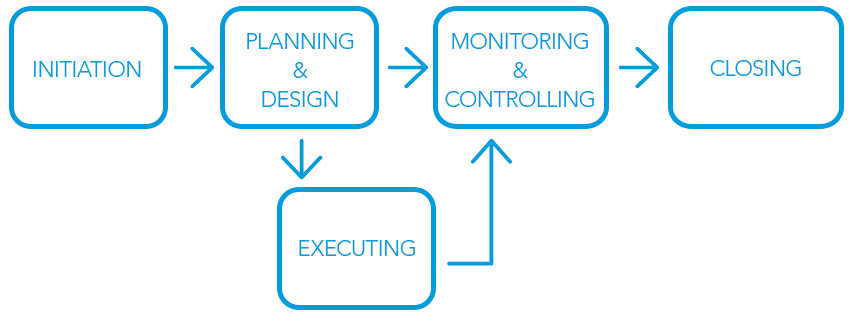
PRINCE2 is an acronym for Projects In Controlled Environments and is a process-driven project management approach divided into seven phases:
This approach works in a linear progression model similar to the Traditional Approach but the primary difference is the fourth step: Controlling a stage. Here, rather than have one execution or construction phase, you’ll separate your project into different stages. Think of it like you’re separating the larger execution of your project into smaller tasks that comprise your overall project. This is beneficial for large, complex projects since you’ll define, monitor and test each stage and adapt throughout. From here, you’ll move into the Manage product delivery stage, where you’ll determine if the work completed in the Controlling stage matches the scope and deliverables of the project. You’ll then plan your next Controlling stage during the Managing stage boundaries phase, and the process will repeat until you complete your project.
PRINCE2’s themes and broader principles will guide you team through its multiple rounds of seven phases.
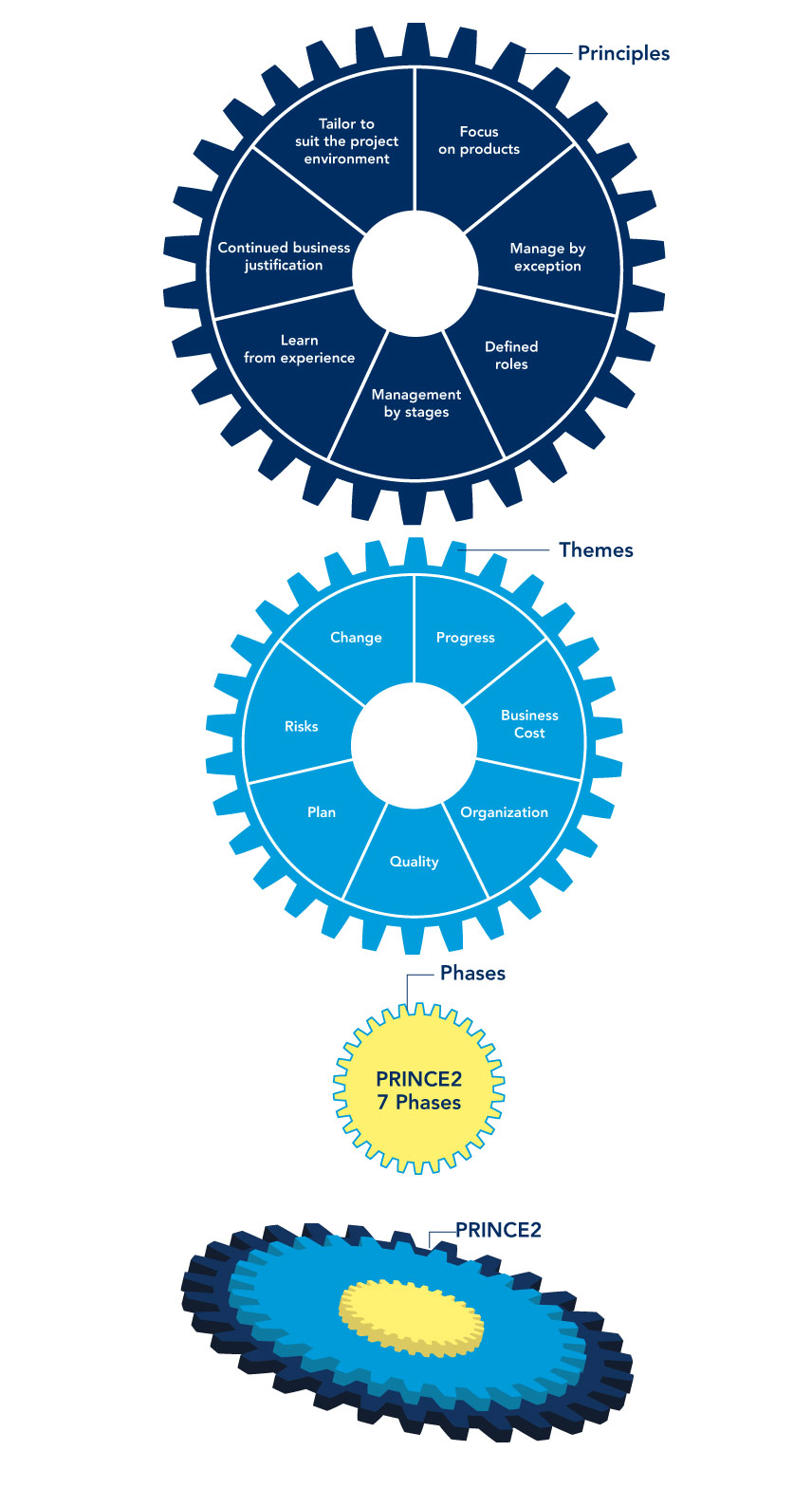
Rather than emphasize tasks and stages like the previous two models, Critical Chain Project Management maximizes the efficiency of the resources your project requires to succeed. Some of your resources will likely include your employees, equipment, time and budget. Once you define the scope of your project, you’ll determine your start and end dates based on your given resources, a process called resource leveling.
Here’s an easy way to resource level your project.
Your critical chain is the longest allowable completion timeframe for each task, including explicit time buffers for delays or outcomes during the project. You’ll link Critical Chain activities together as the primary tasks your team must complete in a defined order. Your team can complete Non-Critical link activities independent of your critical chain. The goal of the critical chain is to motivate your team to complete its tasks as quickly as possible so you complete the project before it reaches the end of your project’s buffer (deadline). If you’re worried your team will procrastinate or cherry pick certain tasks, the Critical Chain approach is right for your project.
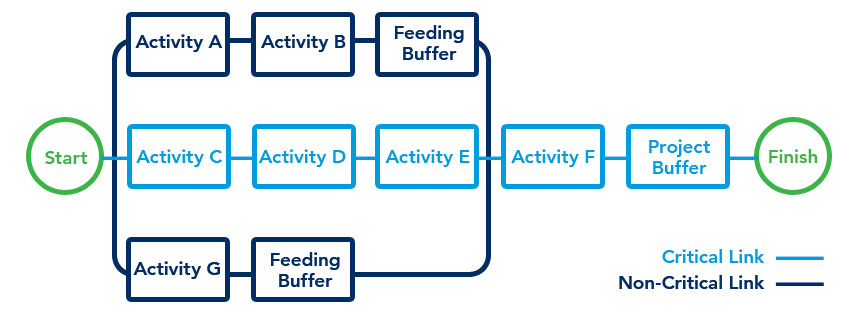
Given its name, it’s no surprise that this project management approach is well suited for large-scale, complex and rapidly changing projects. Extreme project management is built on constant communication between team members so the project can remain agile and change direction instantly if needed. This approach isn’t structured by traditional linear progression of initiating, planning, executing, testing and completing; instead, it uses a feedback loop that allows teams to implement quick solutions, learn from past mistakes and determine the acceptable goal of the project.
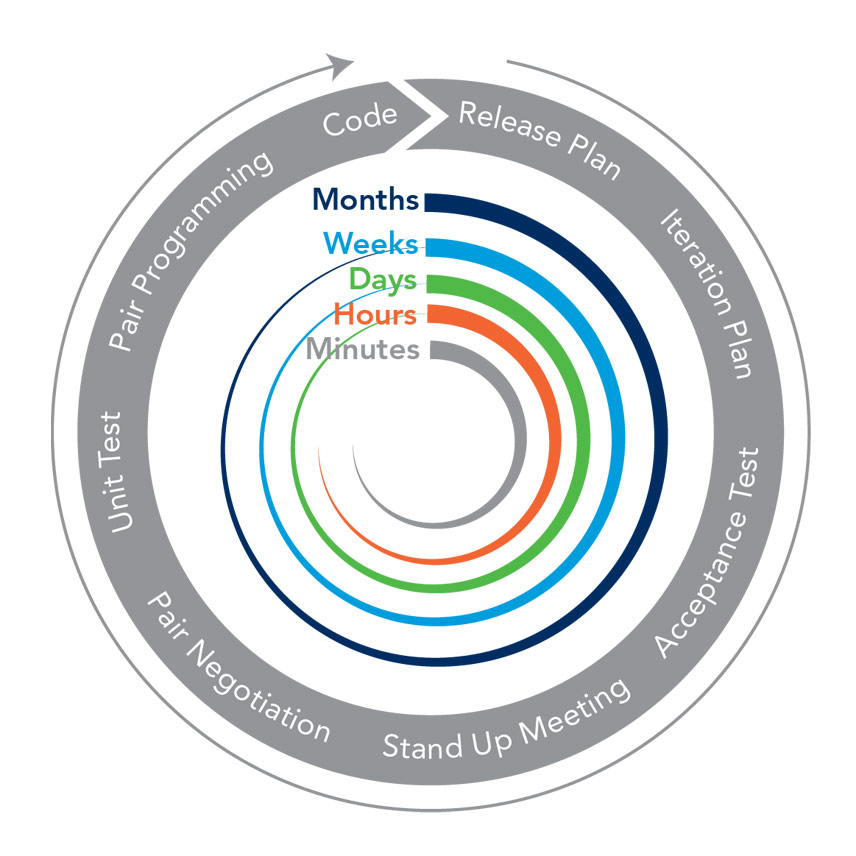
Are you incorporating a massive project where the deliverables are constantly changing? Extreme Project Management is your best bet. Remember the construction and software example from earlier? While the construction company’s project is best suited for the Traditional Approach, the software company can best manage its project with Extreme Project Management thanks to its flexibility and framework for future upgrades.
Regardless of the approach you choose, your management skills will ultimately dictate how well your team executes the project. I’ve found these tips most valuable in my day-to-day management, and I’m sure they’ll help you better manage your next project.
For most projects you’ll manage, with the exception of the Extreme Project Management cases listed above, you’ll want to clearly define the scope and deliverables of your project and avoid scope creep. When defining the scope of your project, it’s important to capture what’s in scope, but also important to capture what’s out of scope. This helps to ensure common understanding of the goals with your project team and stakeholders. This will keep your team focused on the core deliverables of your project.
After determining the scope of your project, determine every necessary task and how long each one will take to complete. Be reasonable here. Setting impossible deadlines will demotivate your team and may upset your stakeholders. Conversely, lax deadlines are inefficient. A good tip: speak with members of your team and ask them how long they expect each task will take. Once you’ve determined the length of each task, you can set a realistic deadline.
Also keep in mind the cost-quality triangle. If you want your project done well and quickly, you’re looking at a costly project. If you want it done well and on budget, plan for a longer deadline. If you want your project completed quickly and on budget, you may sacrifice quality. Weight all these factors when setting expectations for your project.
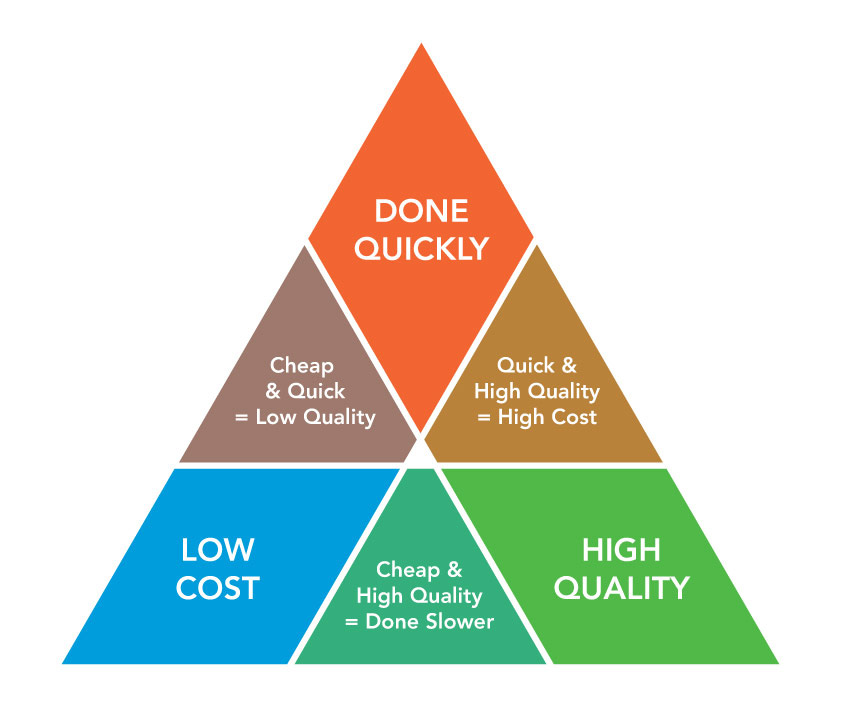
One of your most important tasks as a project manager is communication with your team. How often you communicate will vary depending on the size of your project, your team and your management style. For example, I prefer daily updates from my teams so I’m familiar with their work and what problems they need help solving. SpaceX and Tesla Chief Executive Officer Elon Musk requests a minute-by-minute breakdown of his engineers’ days, including bathroom breaks. That’s a little extreme, but you can never be too immersed in your team’s progress.
Your team members will likely have more technical expertise and project knowledge than you will. Trust them. They know what they need and your job is to support them. Think of it like this: you’ll report the status of your project to stakeholders, so enabling your team to achieve success will result in positive reports more often than negative ones.
Keeping your team’s moral high throughout a project is important, especially as you slog through those rare projects that take years. Goals and milestones will help you achieve two things:
This is the most important tip of all. Problems with your project will happen no matter how well you mitigate risk during the planning phase. Don’t get stuck dwelling on why it happened. The best thing you can do is find a solution and move on.
Now that you have a broad understanding of some different project management approaches and tips to maximize them, you can build the framework to manage your next project. Remember, each approach has its strengths and weaknesses, and one approach may be better suited to your project. Evaluate your project and your team before choosing an approach and you’ll ensure a successful project from planning to completion.
Posted in General business advice,
Contact us and we'll call you right away